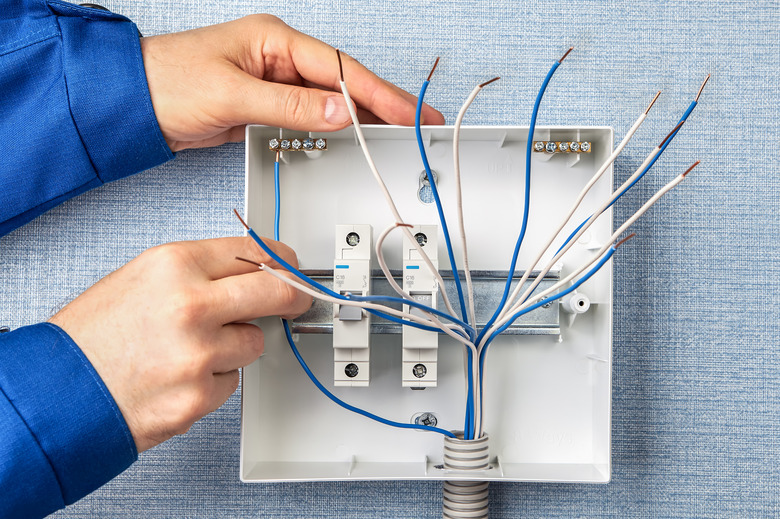How To Calculate The Size Of A Grounding Conductor
Proper grounding is essential for the proper operation of electrical circuits. Current flow through circuits seeking the path of least resistance. This path is from the current source to ground. If grounding is inadequate, current doesn't flow as intended, which causes stray voltages and arching that can damage sensitive circuits. A grounding conductor connects an electrical system to a grounding grounding electrode with reference to earth. It serves as a foundational grounding point for buildings or large commercial sites.
Step 1
Find the current rating of the circuit breaker or "over current" device associated the electrical system you are looking to ground. Circuit breakers protect systems from short circuits or over current conditions and your grounding conductor should be sized to handler these conditions. Refer to electrical specifications, circuit diagrams or reference the circuit breaker box.
Step 2
Refer to NEC Table 250.122 noted in Reference #2. This is the industry standard for grounding conductor sizes in relation to short circuit current flow.
Step 3
Locate the current level in column one of the table that's closest to the current rating you established in step 1 and pick the corresponding grounding conductor size in column two for a copper grounding conductor. For example, if you have 100 amps from step 1, your grounding conductor size should be eight gauge wire or eight AWG.
Cite This Article
MLA
Chestnut, Dwight. "How To Calculate The Size Of A Grounding Conductor" sciencing.com, https://www.sciencing.com/how-8465706-calculate-size-grounding-conductor/. 22 May 2011.
APA
Chestnut, Dwight. (2011, May 22). How To Calculate The Size Of A Grounding Conductor. sciencing.com. Retrieved from https://www.sciencing.com/how-8465706-calculate-size-grounding-conductor/
Chicago
Chestnut, Dwight. How To Calculate The Size Of A Grounding Conductor last modified March 24, 2022. https://www.sciencing.com/how-8465706-calculate-size-grounding-conductor/
